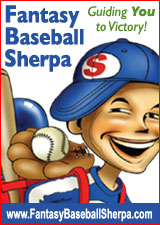| |
|
|
Happy Holidays Guest - Login
|
|
The Genesis of Benchwarmer Baseball
BWB first appeared on the scene in 2000, but is an indirect
descendant of other fantasy games. Obviously, Rotisserie
Baseball is a close relative, but Benchwarmer is different,
since the game depends on individual game results instead of
rankings of accumulated stat totals. Actually, my start in
baseball gaming came from table top games - so I've always had
more affinity to games that resemble real baseball. I
started off with Strat-o-matic, the classic, but throughout
junior high and high school I was addicted to Sher-Co, a game
that brought a play-by-play realism to a dice game. |

|
On Paper Baseball
Starting in 1988, I signed up with OPB.
This was my first exposure to fantasy games - even a year or
two before fantasy football and many years before I actually
participated in a roto-style game. OBP featured a
game-by-game season, much like BWB does today. It also
featured a minor league competition between reserve players,
if I remember correctly, though it was kind of a mystery how
that was scored.
The rather odd feature of OPB was player
allocation in the first year of a league. There was no
typical draft, no salary cap. Instead, you picked the
players you wanted, and you got them all. But every
team that picked a player ended up with an equal share of
that player and you only got to keep him if you had a
majority share by the end of the year. So, when 11
guys picked Kirby Puckett, each team had 1/11th of his
future rights. Through trading, you attempted to build
that majority share (my big trade that year was with a guy
in Duluth as I gave him enough to keep Puckett while I got
enough to keep Frank Viola).
A last-place team in 1989, I had the first
3 picks of the off-season draft (only 3 picks) and my big
pickups were Eddie Murray and Tom Browning. It was a
bad sign when the mailings stopped showing up in August
1990, but I got some consolation in the final mailing in
December 1990 recapping the final third of the season and
the championships and confirmation that I had successfully
completed the worst-to-first season. |
|
|
Robot Baseball
When OPB went out of business, we were
sent a special offer by another company but I declined. In the spring of 1993, I
sent away for a rule packet for a company called Robot
Baseball, but was too busy to complete the draft list. 4 years later, I decided to get back
in and grabbed an orphan team. After a few years of
not really paying much attention to baseball (when you root
for the the post-1992 Pirates and the Twins of the mid-90s,
you can kind of understand why...), the big development of
that season was picking up a team with some guy named Derek
Jeter and getting to know who he was...
Robot, alas, was destined to its demise
after the 1997 season. But
I did hang on to the rule book, which included their
formulas for game scores and salaries. Robot Baseball
is the most direct ancestor of BWB, though this was
pre-Internet fantasy baseball, and required mailing in your
transactions and lineups (and waiting for the mail to bring
game results).
These items survive from Robot Baseball:
- The fundamental idea of the automatic
sub if there are no players with stats in the MLB game
(the "Robot" - now the "Benchwarmer Batter" or "Pinesitter
Pitcher" in our game).
- A modified version of the scoring rules
- including guidelines for batting order, pitching
rotation, and use of the bullpen.
- A modified version of the salary
formula.
- Calculation of the salary cap.
- Guidelines for position eligibility.
- Roster size.
- Minor league rosters (though they did
not calculate any results).
- The weekly transaction structure.
- The mapping of MLB games to fantasy
games.
- The pro-rated salary assumption/rebate
calculation.
- Multi-year contracts (though it was
only allowable for a single year).
- The basic startup draft method.
- The Redistribution Draft.
So far, several Robot veterans have
joined our crew Benchwarmer Baseball owners.
Sign up now! Or
Email
with any requests for more information.
|
|
|
|
|

|
|


